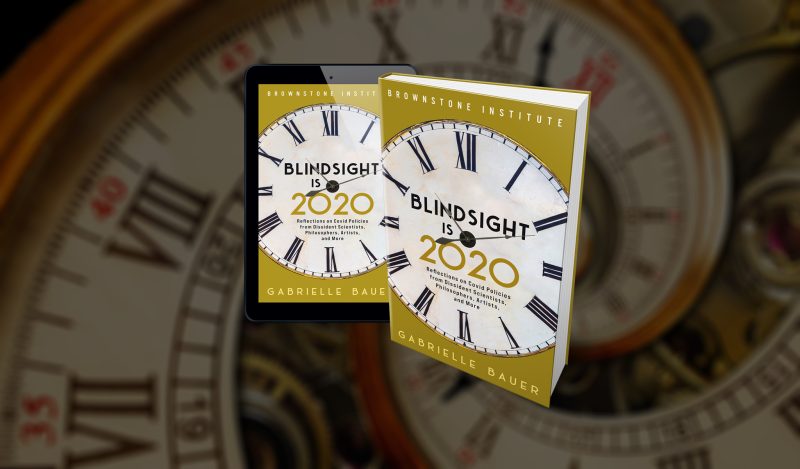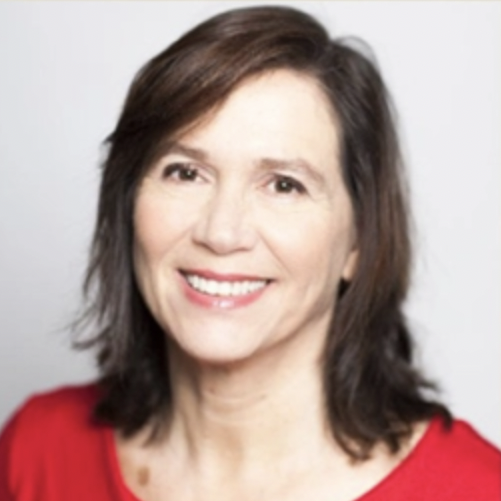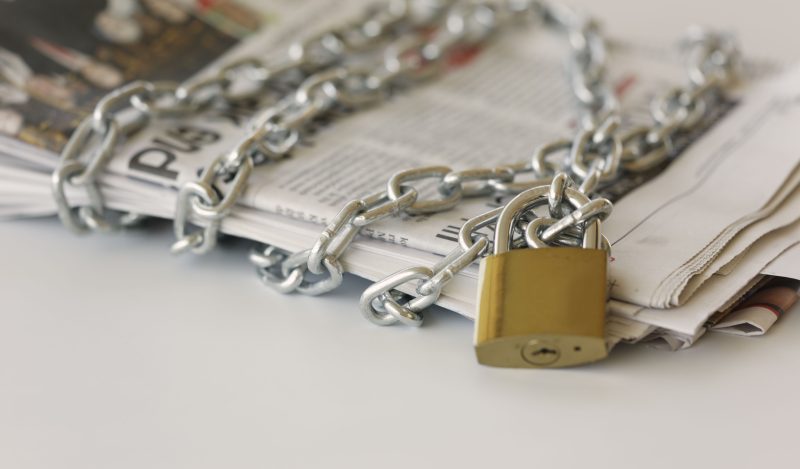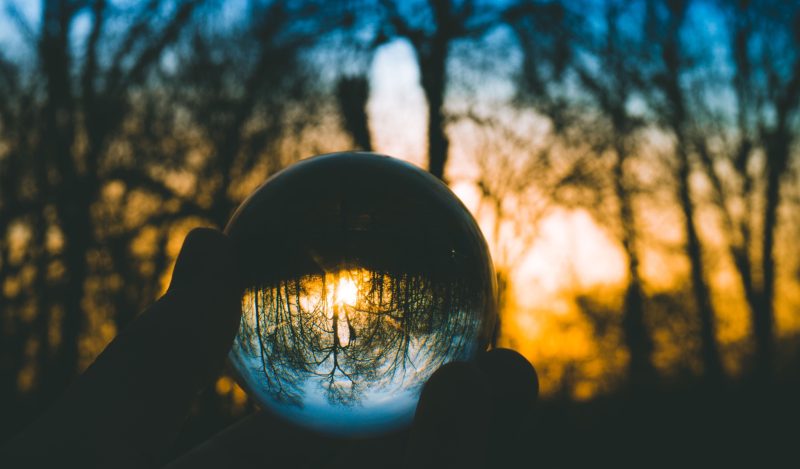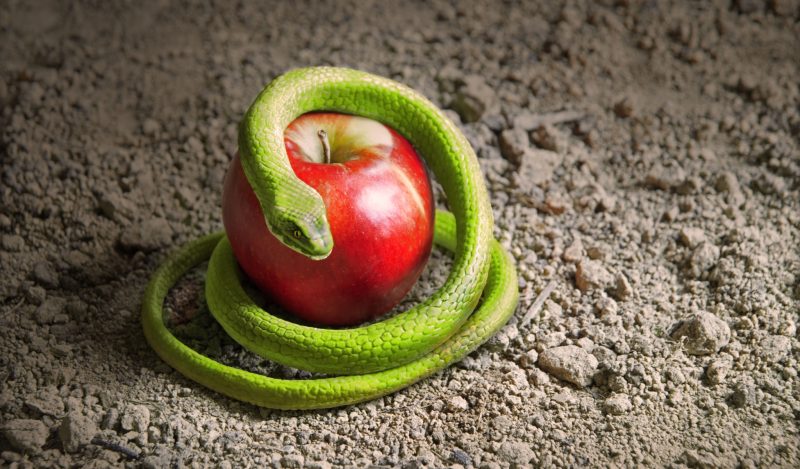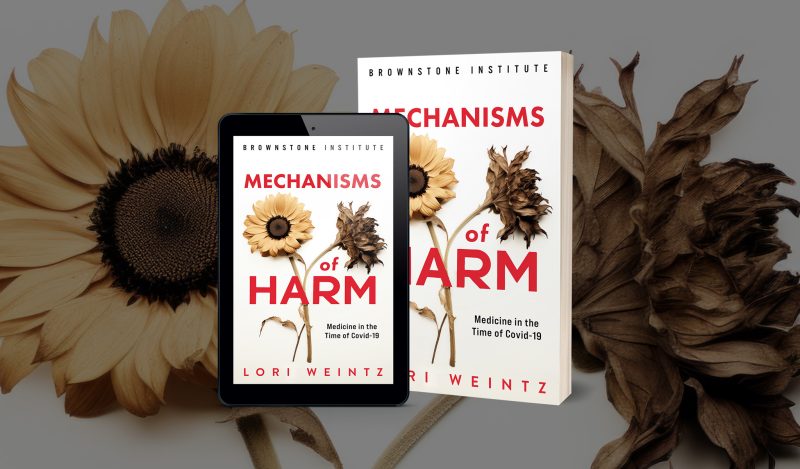Abundance of caution. The expression dropped into the zeitgeist in the spring of 2020 and became a grab-and-go justification for Covid restrictions.
“Out of an abundance of caution,” a Toronto school closed for a week after an itinerant staff member tested positive.
“Out of an abundance of caution,” the US Department of Agriculture advised people with Covid to keep a distance from their pets.
“Out of [an] abundance of caution,” Singapore mandated a quarantine period for incoming travelers who had antibodies after recovering from Covid, on the chance they were harboring a new variant.
“Out of an abundance of caution,” the Biden administration issued new travel bans in answer to the Omicron variant.
[This is an excerpt from the author’s new book Blindsight Is 2020, published by Brownstone.]
The phrase has a lofty ring to it, connoting wisdom and restraint. Fools rush in where angels fear to tread. Better safe than sorry. An ounce of prevention. It reflects the crisis-management approach known as the precautionary principle, aka “just in case.” In public health, the precautionary principle asserts that, when a new threat has the potential to cause serious harm, we must get a jump on prevention even if considerable scientific uncertainty surrounds the threat.
In a nutshell: when the stakes are high, you don’t roll the dice.
The principle dates back to the 1970s, when politicians invoked the German concept of Vorsorge—literally “pre-concern”—to justify tougher environmental measures. It found its way into the 1992 Rio declaration, which states: “In order to protect the environment, the precautionary approach shall be widely applied by States according to their capabilities. Where there are threats of serious or irreversible damage, lack of full scientific certainty shall not be used as a reason for postponing cost-effective measures to prevent environmental degradation.”
Over the years, the precautionary principle seeped into public health policy, and when Covid came along it seemed like just the right compass to follow. The virus was tearing through the world and our leaders didn’t have time to debate the fine points, so they threw up a cloud of mitigation measures based on “just in case.” Just in case plexiglass barriers help stop the spread. Just in case the park bench harbors the virus. Just in case Jane walks past Joe and gives it to him. It can’t hurt, right?
It can, actually. The precautionary principle uses the worst-case scenario, rather than the most probable scenario, as a basis for creating policies. (And as we’ve seen with Covid, people often end up confusing the two.) Such policies are blunt and brutish. They require extreme societal disruptions that, over time, may cause more harm than they prevent.
With three years of hindsight behind us, we can ask ourselves: Did we take caution too far with Covid? Zeb Jamrozik, an infectious disease ethicist based in Melbourne, maintains that we did. “What happened was an abuse of the precautionary principle,” he told me when we chatted on Zoom. “Our leaders used the principle to justify shutting down the world, without fully considering the dangers of doing that. They looked at the worst-case scenario for the virus, but not for the shutdowns. It’s an irony of sorts.”
Covid may be the most flagrant example of misapplied caution in a pandemic, but it isn’t the first one. A post-mortem report on the strategies to contain the H5N1 and A(H1N1) viruses, published in the 2011 Bulletin of the WHO, maintained that “worst-case thinking replaced balanced risk assessment. In both pandemics of fear, the exaggerated claims of a severe public health threat stemmed primarily from disease advocacy by influenza experts. [There is] no reason for believing that a proportional and balanced response would risk lives.”
Historian Jesse Kauffman compares the global response to Covid to the advice generals gave President Kennedy during the Cuban Missile Crisis: “Nuke them first. Better safe than sorry. It’s amazing how much misery and harm has been done by a ‘better safe than sorry’ mindset.”
The “precautionary” shutdowns left a trail of missed cancer surgeries, lost livelihoods, and mental health struggles in their wake. Some of our youngest people, lacking the tools to navigate this strange new world, attempted to take their own lives. As for the old people we were supposedly protecting, UK oral historian Tessa Dunlop, who talks to old women for a living, concluded that the restrictions dehumanized them “to the point that many no longer wanted to live.” Not only did we rob Peter to pay Paul, but in many cases Paul didn’t even want our money.
Why did the policymakers not anticipate any of this? Should it not be obvious that shutting down society can lead to great harm? When I put the question to Jamrozik, he noted that “a pandemic doesn’t encourage long-term thinking. There’s a virus and people want to make it go away, so that’s where they put their focus.” And many believed, more or less, that flattening the curve would solve the problem. “They weren’t prepared for the idea that a pandemic is a long game, so they didn’t look far ahead enough.”
In fact, the costs of abusing precaution may take years to come to light. As a case in point, the precautionary principle led the Japanese government to shut down most of its nuclear power plants after the Fukushima accident in 2011. In a paper called “Be Cautious with the Precautionary Principle,” three economists made the case that the policy increased electricity costs, making heating less affordable to many people, which ultimately resulted in more excess deaths than those from the accident itself.
It’s the law of unintended consequences, which John Ioannidis warned about on March 17, 2020: “We don’t know how long social distancing measures and lockdowns can be maintained without major consequences to the economy, society, and mental health. Unpredictable evolutions may ensue, including financial crisis, unrest, civil strife, war, and a meltdown of the social fabric.”
Not to mention a widening of the equality gap. “I try to think at a global level,” Jamrozik told me. “From an ethical standpoint, the worst types of decisions are those that widen social, educational and health inequalities across the world.”
Which is exactly what happened. “The poorest of the poor have become poorer,” Jamrozik says in a must-watch video interview with Vinay Prasad. The list goes on: food insecurity in developing countries, major disruptions in TB, malaria and HIV programs, more child weddings… Some experts have also suggested that prolonged collective shielding from pathogens could make future epidemics more likely—a phenomenon known as “immunity debt.”
Jamrozik would like to see public health return to its roots of weighing benefits against harms. These harms include the loss of the freedoms we all took for granted before Covid—freedoms “so normal that nobody thought they needed protection.” In our mad scramble toward safety, we forgot that “there are also benefits to freedom, not just for individuals but for society.” That’s why pandemic strategists have traditionally advised the least restrictive measures possible for the shortest possible time.
Covid turned that well-worn template on its head. “Least restrictive possible” wasn’t going to fly when Twitter warriors were screaming that “people will die” if toddlers took off their masks at Chuck E. Cheese.
Jamrozik also objects to framing restrictions as emanations of the virus itself, rather than policy choices. I know just what he’s talking about—all those media headlines announcing that “surging cases leads colleges to switch to remote” or “new variant pushes cities back to mask mandates.” The wording always feels disingenuous to me: Hey, don’t blame us politicians, it’s the virus making these decisions.
Um, no. There is no gravitational force that causes a geography class to move to Zoom when cases reach a certain level. And I’ve never known a variant to strap a mask on someone’s face. As Jamrozik points out, “We had choices about what to do. People decided to implement these things.” People, not viruses.
People likewise chose to “moralize the microbe,” to use Jamrozik’s inspired phrasing. In a paper called “Moralization and Mismoralization in Public Health,” he and co-author Steven Kraaijeveld argue against turning the transmission of an airborne respiratory virus, especially an unusually transmissible one like SARS-CoV-2, into a moral failing: “Unless one is willing to dedicate one’s life to the avoidance of Covid—and even then—there is no deeper sense in which one can realistically have control over getting infected with endemic respiratory viruses.” As for people who engage in so-called higher-risk behaviors, like going to bars or concerts, can we justifiably heap moral blame on them when “everyone stands to be infected in the long run, including more cautious and risk-averse people?”
The world chose the precautionary principle to deal with Covid, but the choice didn’t drop down from the sky. We could have made different choices, and people like Jamrozik believe they would have served us better. We could, for example, have treated young people more fairly. “How do you compensate children for missing two years of school? How do you compensate young people for missing out on pivotal milestones?” Jamrozik says he’s “still waiting for that check from boomers to youth.” (As a boomer myself, I’m happy to oblige. Just tell me where to send the check.)
Caution makes sense—except when it doesn’t. When a threat becomes less acute, we need to set the precautionary principle aside and reach for a more balanced approach—like the principle of proportionality, which states that policies must be “proportional to the good that can be achieved and the harm that may be caused.” This principle pushes us to stretch our ethical muscles beyond the reflex to hide from a single threat. It insists we put the social costs of an intervention under a microscope.
Pandemics give us only bad choices. But if we keep a steady focus on proportionality, we can make them a little less bad. “We need to have a way of stopping those interventions eventually,” Jamrozik says. “We need a way of saying, OK, it’s over now. People can go back to being more free.”
While the idea of trade-offs, of accepting any number of deaths, has made many people bristle during Covid, Jamrozik reminds us that “we can’t optimize for everything. We need to have a conversation as a society about what we’re willing to tolerate.” It’s a tough conversation. But then, he’s an ethicist—tough is his playground.
* * *
The field of ethics has obvious relevance to pandemic management. But what about cognitive science? One of the most intriguing interdisciplinary fields to emerge in recent years, cog-sci brings together psychology, computer science, neuroscience, linguistics and philosophy. I don’t know a single cognitive scientist that I dislike. (And I know a few, my son having majored in the field.) What might a cognitive scientist have to say about Covid? If it’s Mark Changizi, quite a lot. A theoretical cognitive scientist and assistant professor at the Rensselaer Polytechnic Institute in New York, Changizi is known for his hypotheses and theories about optical illusions, speech, music, red-green vision in primates, and—wait for it—pruney fingers. A Renaissance man, to be sure.
When Covid hit, Changizi climbed down from his tower and dove into the Twitter trenches, where his witty jabs at the cognoscenti endeared him to me right off the bat. Like this one: “If you fancy yourself an intellectual, and yet showed no skepticism to the greatest suspension of civil rights in the West in a generation, then maybe you’re not.”
In analyzing a complex situation, “we cognitive scientists tend to look at the social dynamics at play,” Changizi told me when I caught him on the phone, adding that “pandemics are especially challenging because humans are wired to fear cooties, even more so than tornadoes or locusts. When there’s a tornado, people naturally pull together to get through it. In a pandemic, people start treating each other as lepers.”
As a big-picture thinker, Changizi approached the pandemic not just as an epidemiological puzzle, but as a complex social ecosystem with a bunch of moving parts pushing against each other. It baffled him that so many leaders focused on just one of these parts—the virus part—and presumed they could press pause on everything else: “We learned that people actually believe that you can ‘freeze’ the economy, the economy has little relation to health, there’s no large apocalyptic risks with stopping the economy, suspending civil rights en masse is no big deal, and stop fussing about ‘freedom’ like a kid.”
Like Jamrozik, Changizi has deep reservations about the precautionary principle, at least the way it’s been used during Covid. As he sees it, the Covid overlords not only abused the principle, but misunderstood it completely. “The precautionary principle is intended to protect us against new untested policies, medications, or technology,” he explained to me. “We have a tendency to hurt ourselves with our hubris, and the precautionary principle acts as a braking mechanism.”
This means the burden of proof should rest on the people introducing an untested policy, not on those opposing it. In the case of Covid, lockdown skeptics simply represent the status quo—the way societies have managed pandemics in the past—and should not have to defend their position. Ditto for mask mandates. If school administrators want mask mandates and parents don’t, the burden of gathering evidence ought to fall on the administrators, not the parents. “I’m not slamming the restrictions themselves, just arguing about where the burden of evidence should lie.”
The evidence to justify the lockdowns never materialized. The untested policy was simply declared scientific and inviolable, no questions allowed. Scientists and public health experts who presented alternatives, like the Great Barrington Declaration or the UK’s Time For Recovery, were booed off the stage.
As expected from someone with a doctorate in applied mathematics and computer science, Changizi has a lot to say about risk. At the start of the pandemic, “all the publications were conflating case fatality rate with infection fatality rate, which is much lower,” he told me. “So people were walking around thinking they had a five-percent risk of dying of Covid, regardless of heir age or health status. Once this gets embedded in people’s minds, it’s hard to get it out. So people kept overestimating the risks.”
Several surveys bear out this claim. In July 2020, the Covid-19 Opinion Tracker survey asked a representative sample of adults in six countries: “How many people in your country have died of coronavirus?” US respondents estimated 9 percent, 220 times higher than the actual figure, while German respondents overshot by a factor of 300. A Franklin-Templeton-Gallup (FTG) survey of 35,000 US adults found an equally dramatic gap between perception and reality: on average, respondents estimated the share of COVID-19 deaths from people under 25 at 8 percent—80 times higher than the actual figure of 0.1 percent. (There’s either something wrong with people’s brains or the Covid risk communicators didn’t do their job, and I know which way I’m voting.)
“It became a tribal thing, at least in the US,” Changizi told me. “You signal your membership to a political tribe by your perceptions of Covid. If you’re a Democrat, you had to think it was this very dangerous thing.” This divide began early: in a nationally representative survey conducted in April-May 2020, Democrats guessed higher than Republicans on the risk of catching Covid, being hospitalized for it, and dying from it.
Risk tolerance also went sideways. People who, before Covid, had cheerfully accepted the everyday risks of living—a nasty flu going around, a road trip across the country—now declared it irresponsible and unethical to accept any risk above zero. How would you feel if you stepped out of the house and got Covid? Or worse, gave it to your aunt or your mailman? Such cheap shots precluded a grownup discussion about risk.
Covid or no Covid, people’s risk of dying goes up every year. It sucks, but it’s baked into the pie of life, and before Covid we all understood this. As the BBC’s Timandra Harkness points out in UnHerd magazine, most people don’t wake up on their birthday and ponder the statistical reality that they’re 9 percent more likely to die than a year earlier. While acknowledging that willingness to accept risk varies widely in the population—she herself rides motorcycles—Harkness reminds us that living well entails risks for everyone. She would have liked to see Covid handled like motor vehicles—“as a risk that can’t be eliminated altogether, but can be mitigated.”
It bears noting that public health organizations lean heavily toward risk aversion. Take the CDC, an organization that instructs us never to cook meat without a thermometer and to avoid eating sushi. (That’s a no from me, dawg.) Some people feel secure in that framework, while others find it stifling. During Covid, we were all asked to play in the safest sandbox: Reduce your risk by wearing two masks. Reduce your risk by talking softly. Whatever risk-reducing measure you can take, you should take.
Remember the war on drugs? Covid brought about a war on risk. As Michael Brendan Dougherty points out in the National Review, “the war on mitigating risk is endless.” You can always throw up a new policy to make it lower. Writing for Reason magazine, Robby Soave chafes at this blinkered focus on risk minimization—what he calls Faucism. All that matters is “the calculus of the most risk-averse people: unelected public health experts.”
When Jon Karl of ABC News asked Fauci if he thought we would ever reach the point of dropping masks on airplanes, Fauci responded: “I don’t think so. I think when you’re dealing with a closed space, even though the filtration is good, that you want to go that extra step.” This mindset presumes that nothing matters except reducing risk. Seeing faces doesn’t matter. Smiling at a flight attendant doesn’t matter. Cracking jokes with your seatmate (who could become your spouse, if you play your cards right) doesn’t matter. From someone like Fauci, entrusted to oversee a country’s well-being, I expected a more capacious world view. In any case, the joke’s on him. Every day, more and more people are showing their faces on planes, on trains, on buses, evidently finding enough value in an N95-free life to justify an extra increment of risk.
Changizi says no to an indefinitely masked world for one simple reason, which he repeats nine times (with minor variations) in a short video clip: “Masks cover our f***ing faces.” (He bleeped out the first vowel to head off would-be censors.) “Our very identities are in that face, the socioemotional language that we use to communicate,” he says. “If you’re a normal human being, you know in your bones that how we live with other humans is using those emotional expressions.” In the 2022 book Expressly Human, Changizi and mathematician Tim Barber argue that the “emotional overtones” conveyed through facial expressions constitute our first and most important language. What we broadcast on our faces can dictate who gets the last slice of pizza or who clinches the multinational business deal (not to mention the poker tournament).
Judging from the global unmasking trend as Covid eases into endemicity, a good portion of the world agrees with Changizi’s take on masks. His colleagues on Twitter, not so much: “I’ve lost all these people I used to follow, all far left, and some went out of their way to attack me,” he told me. YouTube and Twitter also cut him off, “confusing opinion with misinformation.” Not one to take the censors’ verdict lying down, he joined Michael Senger and Daniel Kotzin in an April 2022 civil action suit against Ohio’s Department of Health and Human Services. The plaintiffs allege that criticizing government policies does not constitute misinformation and that, to their knowledge, nobody has had their account suspended for exaggerating the risks of Covid. It’s a point many people miss: if downplaying a risk counts as misinformation, so too does inflating it, which can cause just as much societal damage.
On the personal front, Changizi has faced “Covid denier” accusations from several family members and friends—a rather curious word choice, when one considers that he began poring over Covid data while the Diamond Princess cruise ship was still idling off-shore. He carries on with enviable equanimity, which he attributes to having “the right kind of personality for this sort of thing. Like a duck, I let the droplets roll off.”
Near the end of our phone chat, he tossed off one of his ideas for a future book: “Aloof: how not giving a damn maximizes your creativity.” I suggested he start writing it, stat. A lot of us counternarrative types could use some tips on growing thicker skins.
Published under a Creative Commons Attribution 4.0 International License
For reprints, please set the canonical link back to the original Brownstone Institute Article and Author.
